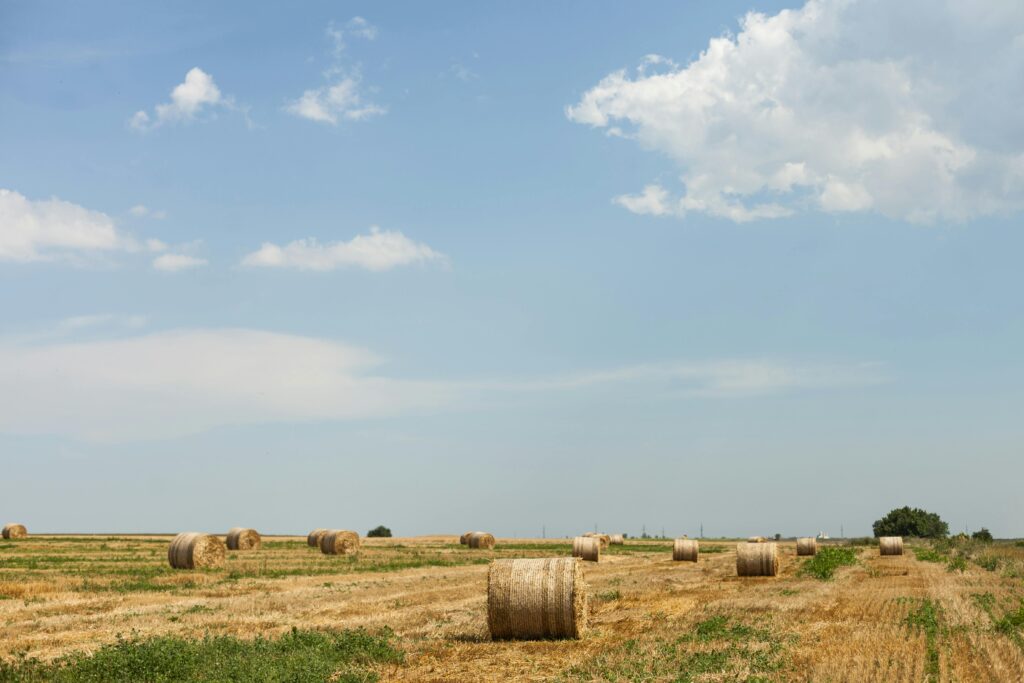Unlocking Passive Income from Land: Comprehensive Strategies for Landowners
Generating passive income from land is a powerful strategy to maximize your property’s value. Whether you own a vast rural estate or a small urban lot, there are various methods to create a steady income stream with minimal effort. This guide will explore diverse ways to make your land work for you, offering both traditional and innovative approaches to land investment.
Understanding Land Leasing Opportunities for Passive Income
Leasing your land is one of the most straightforward ways to generate passive income. Depending on your location and land type, various leasing opportunities exist:
- Agricultural Leases: Rent your land to farmers for crop production, livestock grazing, or other agricultural uses.
- Commercial Leases: Lease your land for commercial purposes, such as parking lots, storage facilities, or small businesses.
- Residential Leases: If your land is suitable for development, leasing it to residential builders can be highly profitable.
Agricultural Land Rental Income: A Stable Source of Passive Earnings

Agricultural land rental income is a reliable way to generate passive income. This strategy involves renting your land to farmers or agricultural companies for crop production, livestock grazing, or other farming activities.
- Crop Production: Leasing your land to grow crops like wheat, corn, or soybeans can yield consistent rental income.
- Livestock Grazing: Renting your land to graziers allows them to raise cattle, sheep, or goats on your property, providing you with a regular income stream.
Key Takeaways for Generating Passive Income from Land
- Research and Evaluate Options: Thoroughly explore different passive income streams, such as timberland investment, billboard advertising, and leasing for hunting or fishing, to find the best fit for your land.
- Maximize Land Potential: Assess your land’s unique features and suitability for various income-generating opportunities like agricultural leasing, renewable energy projects, and recreational uses.
- Understand Market Dynamics: Stay informed about market rates, potential earnings, and the long-term value of your land to make informed decisions and maximize profits.
- Secure Legal Agreements: Draft clear and legally sound lease agreements that protect your interests, outlining terms, responsibilities, and payment schedules.
- Continuous Management: Regularly inspect your land, manage maintenance, and ensure compliance with tax obligations to maintain steady income streams.
- Diversify Income Streams: Explore multiple leasing opportunities and additional income sources like conservation easements or timber harvesting to enhance revenue.
- Stay Adaptive: Keep up with market trends, network with other landowners, and periodically review your strategies to adapt to new opportunities and challenges.
Exploring Timberland Investment Returns
Investing in timberland can be a lucrative long-term strategy for passive income. Timberland investments involve purchasing land primarily for the growth and harvest of timber.
Investing in timberland can be a lucrative long-term strategy for passive income. Timberland investments involve purchasing land primarily for the growth and harvest of timber.
- Timber Harvesting: Landowners can earn substantial income by selling mature trees to lumber companies.
- Carbon Offsetting: Some timberland investors lease their land to companies seeking carbon offsets, which can provide additional income.
Profitable Land Investments: Maximizing Your Returns
Profitable land investments require careful planning and a deep understanding of market trends. Here are some strategies to maximize your returns:
- Land Appreciation: Hold onto your land until its value appreciates, then sell it for a profit.
- Subdivision: Subdivide your land into smaller parcels and sell each one individually for a higher total return.
- Improvement: Enhance your land by adding infrastructure like roads, utilities, or buildings to increase its value.
Renewable Energy Land Leases: A Growing Market
Leasing your land for renewable energy projects is an increasingly popular way to generate passive income. With the rise of green energy, landowners can lease their land for solar farms, wind turbines, or other renewable energy projects.
- Solar Farms: Leasing your land to solar energy companies can provide a long-term, stable income stream.
- Wind Turbines: Landowners in windy areas can lease their land to wind energy companies for turbine installation.
How to Earn Passive Income by Leasing Land for Farming

Leasing your land for farming is a classic method of earning passive income. Farmers are always in need of land for crop production, livestock grazing, or other agricultural activities.
- Crop Production: Lease your land to farmers for growing various crops, ensuring regular rental payments.
- Livestock Grazing: Rent your land to livestock owners who need pasture for their animals.
Land Income Ideas: Diversify Your Revenue Streams
Exploring different land income ideas can help you diversify your revenue streams and reduce financial risk. Consider these unique ways to generate passive income from land:
- Billboard Advertising: Rent space on your land to advertising companies for billboard placement.
- Vehicle Storage: Convert your land into a storage facility for vehicles, boats, or RVs.
Earning from Land Ownership: Maximizing Your Investment
Owning land provides numerous opportunities to generate income, but it’s essential to maximize your investment by choosing the right strategies.
- Rental Income: Lease your land to tenants for various purposes, from farming to commercial use.
- Recreational Leasing: Rent your land to hunters, fishermen, or outdoor enthusiasts for recreational activities.
Rural Property Income Streams: Leveraging Remote Locations
Rural properties offer unique opportunities for passive income, especially for landowners in remote areas.
- Hunting Leases: Lease your land to hunters during the hunting season.
- Fishing Leases: Rent your land to fishermen who need access to ponds, lakes, or rivers.
Converting Land into a Vehicle Storage Space
One innovative way to generate passive income from land is by converting it into a vehicle storage space. This option is ideal for land near urban centers or highways.
- RV and Boat Storage: Rent space on your land for RVs, boats, and other large vehicles.
- Car Storage: Offer secure parking for cars, trucks, and motorcycles.
Land Rent for Farming: An Evergreen Source of Income
Renting your land for farming has been a reliable source of income for centuries. This time-tested strategy continues to be a profitable option for landowners.
- Crop Farming: Lease your land for the production of staple crops like wheat, corn, and soybeans.
- Specialty Farming: Consider leasing your land for specialty crops like organic vegetables, fruits, or herbs.
Timberland Investment Returns: A Long-Term Strategy
Investing in timberland can yield significant returns over time. Trees take years to mature, but the payoff can be substantial.
- Harvesting Timber: Sell mature trees to lumber companies for a substantial profit.
- Sustainable Forestry: Engage in sustainable forestry practices to ensure long-term income from your timberland.
Utilizing Tax Incentives for Land Investments
Taking advantage of tax incentives can significantly enhance your land investment returns. Many governments offer tax breaks for landowners engaged in specific activities.
- Agricultural Tax Breaks: Landowners who lease their land for farming may qualify for agricultural tax exemptions.
- Conservation Easements: Donating land for conservation can provide significant tax benefits.
Creative Ways to Generate Passive Income from Land
Thinking outside the box can lead to creative ways to generate passive income from land. Here are a few unconventional ideas:
- Glamping Sites: Set up luxury camping sites on your land and rent them out to tourists.
- Photographer Rentals: Rent your scenic land to photographers for photo shoots or events.
Land-Based Passive Earnings: Making the Most of Your Property
Maximizing land-based passive earnings requires a combination of traditional and innovative approaches.
- Billboard Leasing: Allow advertising companies to place billboards on your land.
- Cell Tower Leasing: Lease your land to telecommunications companies for cell tower installation.
Renewable Energy Land Leases: Tapping into Green Energy
Leasing land for renewable energy projects is not only profitable but also environmentally responsible. Here’s how you can tap into the green energy market:
- Solar Panel Installations: Lease your land to solar energy companies for panel installations.
- Wind Farms: If your land is in a windy area, consider leasing it for wind turbine projects.
Earning from Land Ownership: Strategies for Consistent Income
Consistent income from land ownership requires a strategic approach. By diversifying your land use, you can create multiple income streams.
- Recreational Leasing: Rent your land to outdoor enthusiasts for hunting, fishing, or camping.
- Commercial Leasing: Lease your land for commercial purposes, such as parking lots or storage facilities.
Profitable Land Investments: Maximizing Your ROI
Maximizing your return on investment (ROI) from land requires careful planning and a deep understanding of the market.

- Land Appreciation: Hold onto your land until it appreciates in value, then sell it for a profit.
- Subdividing Land: Subdivide your land into smaller parcels and sell each one for a higher total return.
Exploring Unique Land Income Ideas
Exploring unique land income ideas can help you uncover hidden opportunities for passive income.
- Billboard Advertising: Rent space on your land for billboard advertisements.
- Vehicle Storage: Convert your land into a storage facility for vehicles, boats, or RVs.
Leasing Land to Carbon Offset Buyers
Leasing land to companies seeking carbon offsets is a growing trend. This strategy involves allowing companies to use your land for activities that reduce their carbon footprint.
- Tree Planting: Lease your land for tree planting projects that sequester carbon.
- Reforestation Projects: Participate in reforestation efforts to earn income while supporting the environment.
How to Create Passive Income from Vacant Land
Creating passive income from vacant land requires innovation and strategic planning. Whether you own a small urban lot or a large rural property, there are numerous ways to monetize your land.
- Leasing for Agriculture: Rent your land to farmers for crop production or livestock grazing.
- Commercial Leasing: Lease your land for commercial purposes, such as parking lots or storage facilities.
Lease Your Land for Passive Income: A Step-by-Step Guide
Leasing your land for passive income is a straightforward process, but it requires careful planning and legal considerations.
- Identify Potential Tenants: Determine who might be interested in leasing your land, whether farmers, businesses, or individuals.
- Draft a Lease Agreement: Work with a lawyer to create a lease agreement that protects your interests while providing clear terms for the tenant.
How to Make Money with Land: Practical Tips
Making money with land is all about choosing the right strategy for your property type and location.
- Agricultural Leases: Rent your land to farmers for a steady income.
- Commercial Leases: Lease your land for commercial uses, such as parking lots or storage facilities.
Benefits of Turning Land into a Valuable Asset
Turning land into a valuable asset requires a combination of strategic planning and market awareness.
- Land Appreciation: Hold onto your land until its value increases, then sell it for a profit.
- Improvement: Enhance your land by adding infrastructure like roads or utilities to increase its value.
Can We Pay You to Store Vehicles?
One unique way to generate passive income from land is by offering vehicle storage. If your land is near an urban area or highway, this can be a lucrative option.
- RV and Boat Storage: Rent space on your land for RVs, boats, and other large vehicles.
- Car Storage: Offer secure parking for cars, trucks, and motorcycles.
Land Leasing Opportunities: Maximizing Your Property’s Potential
Land leasing opportunities abound for those willing to explore different options. By leasing your land, you can generate a steady stream of passive income.
- Agricultural Leases: Rent your land to farmers for crop production or livestock grazing.
- Commercial Leases: Lease your land for commercial purposes, such as parking lots or storage facilities.
Earning from Land Ownership: Proven Strategies
Proven strategies for earning from land ownership involve a mix of traditional and innovative approaches.
- Rental Income: Lease your land to tenants for various purposes, from farming to commercial use.
- Recreational Leasing: Rent your land to hunters, fishermen, or outdoor enthusiasts.
Exploring Profitable Land Investments
Profitable land investments require a deep understanding of market trends and careful planning.
- Land Appreciation: Hold onto your land until it appreciates in value, then sell it for a profit.
- Subdivision: Subdivide your land into smaller parcels and sell each one individually for a higher total return.
Land Income Ideas: Creative Approaches
Creative approaches to generating land income can help you uncover new opportunities for passive earnings.

- Billboard Advertising: Rent space on your land for billboard placement.
- Vehicle Storage: Convert your land into a storage facility for vehicles, boats, or RVs.
Leasing Land to Renewable Energy Companies
Leasing land to renewable energy companies is a growing trend that can provide substantial income.
- Solar Farms: Lease your land to solar energy companies for long-term, stable income.
- Wind Turbines: If your land is in a windy area, consider leasing it for wind turbine projects.
Maximizing Passive Income from Land: Advanced Strategies
Maximizing passive income from land involves advanced strategies that go beyond basic leasing. By exploring different avenues, you can significantly increase your revenue.
- Land Banking: Purchase land and hold it until it appreciates in value, then sell it for a profit.
- REITs (Real Estate Investment Trusts): Invest in REITs that focus on land investments for a more hands-off approach.
Land Leasing Opportunities: Diverse Options for Landowners
Diverse land leasing opportunities exist for landowners willing to explore different options. From agricultural leases to commercial rentals, the possibilities are vast.
- Agricultural Leases: Rent your land to farmers for crop production or livestock grazing.
- Commercial Leases: Lease your land for commercial purposes, such as parking lots or storage facilities.
Profitable Land Investments: High-Return Strategies
High-return strategies for land investments involve careful planning and market awareness.
- Land Appreciation: Hold onto your land until it appreciates in value, then sell it for a profit.
- Subdivision: Subdivide your land into smaller parcels and sell each one individually for a higher total return.
Exploring Unique Land Income Ideas
Unique land income ideas can help you uncover hidden opportunities for passive income.
- Billboard Advertising: Rent space on your land for billboard placement.
- Vehicle Storage: Convert your land into a storage facility for vehicles, boats, or RVs.
Renewable Energy Land Leases: Tapping into the Green Economy
Tapping into the green economy by leasing land for renewable energy projects is a win-win for both the environment and your bank account.
- Solar Farms: Lease your land to solar energy companies for long-term, stable income.
- Wind Turbines: If your land is in a windy area, consider leasing it for wind turbine projects.
Checklist for Generating Passive Income from Land
1. Assess Your Land’s Potential
- Evaluate Location: Determine the suitability of your land for various passive income opportunities (e.g., agricultural, renewable energy, recreational).
- Check Zoning Laws: Verify local zoning regulations and land-use restrictions.
- Soil Quality Test: If considering agricultural leasing, test the soil quality.
- Survey Natural Resources: Identify any timber, water bodies, or other natural resources on your land.
2. Research Passive Income Options
- Agricultural Leasing: Explore opportunities to lease your land to local farmers.
- Renewable Energy Projects: Investigate the potential for leasing land for solar or wind farms.
- Timberland Investment: Consider the long-term benefits of growing and harvesting timber.
- Recreational Leasing: Assess the possibility of leasing land for hunting, fishing, or other recreational activities.
- Billboard Advertising: If your land is near a busy road, consider leasing space for billboard advertising.
3. Estimate Potential Earnings
- Market Rates: Research current market rates for land leasing in your area.
- Calculate Costs: Consider costs associated with each passive income stream (e.g., maintenance, insurance, taxes).
- Project Long-Term Income: Estimate potential earnings over time, including any appreciation in land value.
4. Create a Lease Agreement
- Draft Lease Terms: Clearly outline the lease terms, including payment schedule, land use, and maintenance responsibilities.
- Legal Review: Have the lease agreement reviewed by a lawyer to ensure it protects your interests.
- Include Renewal Options: Consider adding renewal terms or options for long-term leases.
5. Market Your Land
- Target Audience: Identify potential tenants (e.g., farmers, renewable energy companies, recreational enthusiasts).
- Online Listings: List your land on real estate websites and platforms that cater to your target audience.
- Local Advertising: Use local channels like community boards, newspapers, and social media to advertise your land.
6. Manage and Monitor Your Land
- Regular Inspections: Conduct regular inspections to ensure the tenant is adhering to the lease terms.
- Maintenance Plan: Create a maintenance plan for your land, addressing any ongoing needs.
- Tax Compliance: Stay on top of property taxes and other financial obligations.
7. Explore Additional Income Streams
- Multiple Leases: Consider leasing different portions of your land for various purposes (e.g., farming, hunting, energy).
- Conservation Easements: Look into selling conservation easements for additional revenue.
- Timber and Resources: If applicable, explore income from timber harvesting, mineral rights, or other natural resources.
8. Stay Informed and Adapt
- Market Trends: Keep up with market trends and adjust your strategies accordingly.
- Networking: Connect with other landowners and industry professionals to learn about new opportunities.
- Review Agreements: Periodically review and update lease agreements to reflect current conditions and opportunities.
